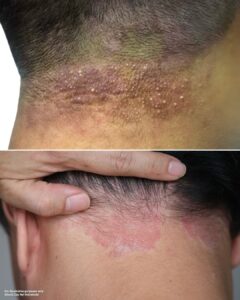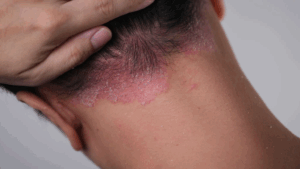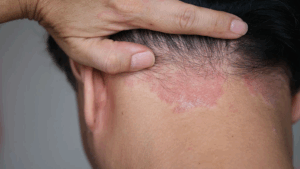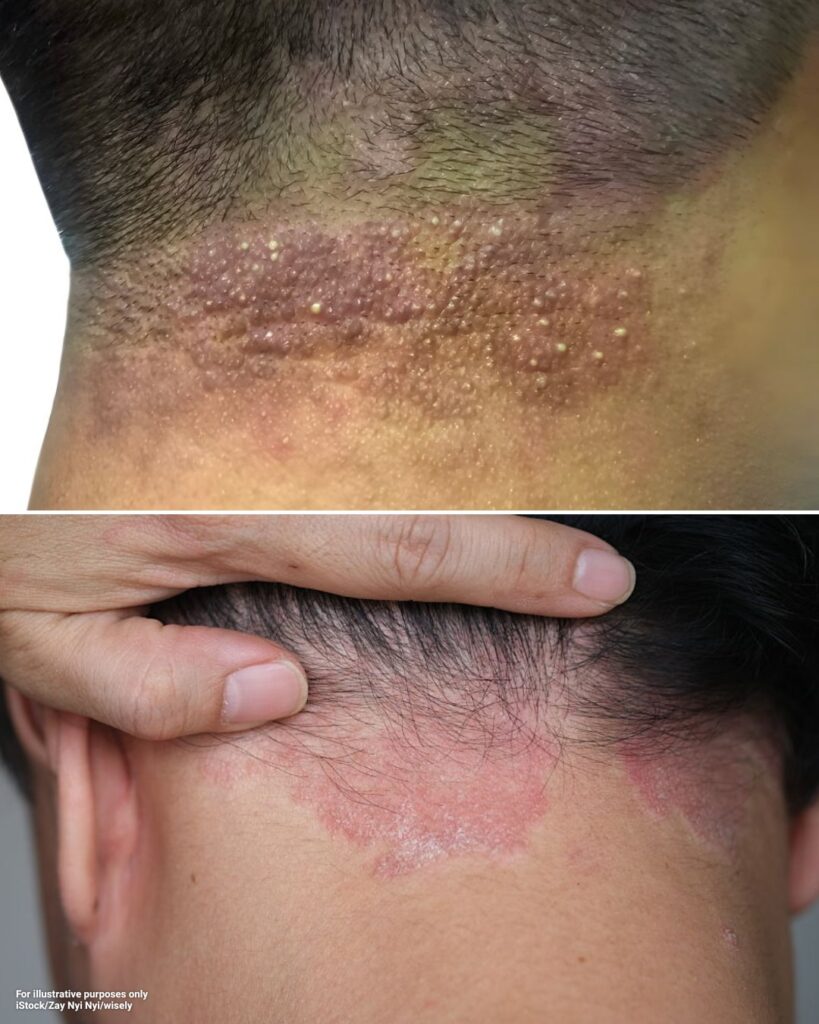Seborrheic dermatitis might sound like a complicated medical term, but in reality, it’s a condition many people are familiar with—sometimes without even knowing its name. If you’ve ever dealt with dandruff or noticed persistent flaky, itchy patches on your skin, chances are you’ve experienced it. It’s one of the most widespread skin concerns, and while it can be frustrating because of its visibility, it’s also very treatable. The encouraging news is that although seborrheic dermatitis is chronic—meaning it often comes and goes throughout life—there are plenty of effective ways to manage flare-ups and keep it under control.
What Exactly Is Seborrheic Dermatitis?
Seborrheic dermatitis is a long-term, inflammatory skin condition that primarily affects areas rich in sebaceous (oil-producing) glands. These areas include the scalp, eyebrows, sides of the nose, eyelids, behind the ears, chest, and even the back. Because these regions produce more natural oils, they provide the perfect environment for seborrheic dermatitis to appear.

On the scalp, seborrheic dermatitis usually presents itself as dandruff—those stubborn white or yellow flakes that fall on your clothes and shoulders. On the face and body, it may cause greasy, red, scaly patches that can itch, burn, or simply feel uncomfortable. In infants, the condition is known as cradle cap. It appears as thick, crusty, yellowish scales on the scalp but usually resolves on its own after a few months.
The precise cause isn’t completely understood, but researchers believe that seborrheic dermatitis develops due to a combination of three factors:
- Excess oil production – creating an environment where irritation thrives.
- Overgrowth of Malassezia yeast – a naturally occurring fungus that multiplies quickly in oily areas.
- Immune system reaction – where the body responds strongly to the combination of oil and yeast, resulting in inflammation and irritation.
It’s crucial to emphasize that seborrheic dermatitis is not contagious. Having it doesn’t mean someone is unclean or careless with hygiene. In fact, even people who are diligent with skincare routines often experience flare-ups.
Common Symptoms
Symptoms may vary depending on which part of the body is affected, but several hallmark signs are consistent:
- On the scalp: White or yellow flakes, itching, redness, and greasy buildup.
- On the face: Patches of redness or scaling, especially around the eyebrows, sides of the nose, beard area, or eyelids.
- On the body: Itchy, red, flaky plaques on the chest, back, or in skin folds.
- In infants: Cradle cap with thick, yellow, crusty scales.
Flare-ups can be unpredictable. They often worsen in cold, dry weather and during periods of high stress or fatigue. Interestingly, many people find their symptoms ease during summer months, possibly because sunlight provides natural antifungal benefits.
How Is Seborrheic Dermatitis Treated?
Although there is no permanent cure for seborrheic dermatitis, the condition is highly manageable. Treatment usually requires a combination of medicated products, consistent skincare, and lifestyle adjustments.
1. Scalp Treatments
When seborrheic dermatitis appears on the scalp, the first step is usually a medicated shampoo. Look for shampoos with one or more of these active ingredients:
- Ketoconazole: An antifungal that reduces yeast overgrowth.
- Selenium sulfide: Helps slow down the excessive turnover of skin cells.
- Zinc pyrithione: Effective against yeast and bacteria.
- Salicylic acid or coal tar: Works to loosen and reduce thick scaling.
These shampoos are typically used several times a week until the condition improves, after which they can be used less frequently for long-term maintenance.

2. Topical Medications
For seborrheic dermatitis on the face, chest, or ears, dermatologists may prescribe or recommend:
- Antifungal creams or gels to reduce yeast growth.
- Low-potency corticosteroid creams to relieve itching and redness (but only for short-term use to avoid side effects).
- Calcineurin inhibitors (like tacrolimus or pimecrolimus) for sensitive areas such as eyelids, since they don’t carry the risks associated with long-term steroid use.
3. Gentle Skincare Habits
Everyday skincare choices can make a noticeable difference:
- Cleanse with mild, fragrance-free cleansers instead of harsh soaps.
- Moisturize daily to prevent dryness and irritation.
- Avoid products with alcohol or drying agents that worsen scaling.
- Wash oily areas regularly, but avoid scrubbing aggressively—over-washing can trigger more irritation.
4. Lifestyle Adjustments
Because flare-ups often align with stress and environmental changes, lifestyle habits play an important role:
- Manage stress through relaxation, mindfulness, or regular exercise.
- Prioritize sleep to support overall skin health.
- Use a humidifier during winter to counteract dry indoor air.
- Spend time in natural sunlight (with sunscreen protection), which may reduce yeast overgrowth and calm the skin.
Living with Seborrheic Dermatitis
Seborrheic dermatitis can be discouraging because it tends to return. Many people experience flare-ups right before big events, making it feel especially stressful. However, with proper treatment and consistent care, it is very possible to keep symptoms under control.
If your condition becomes persistent, severely uncomfortable, or impacts your confidence, it’s a good idea to consult a dermatologist. They can confirm whether it truly is seborrheic dermatitis or another condition that looks similar, such as psoriasis or eczema, and they can prescribe stronger medications if needed.

Final Thoughts
Seborrheic dermatitis is common, chronic, and entirely manageable. Whether it appears as dandruff on the scalp or as flaky patches on the face and body, there are many effective solutions to help you regain comfort and confidence in your skin.
By combining medicated shampoos, topical treatments, gentle skincare routines, and healthy lifestyle habits, most people can successfully reduce flare-ups and improve their skin’s overall condition.
Remember: Consistency is everything. While no treatment will cure seborrheic dermatitis forever, sticking to the right routine allows you to stay ahead of flare-ups, minimize discomfort, and feel more at ease in your own skin.

